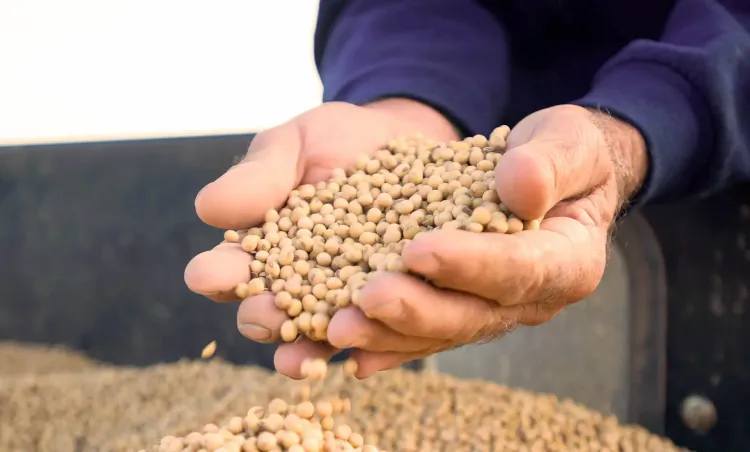Are American Farmers Facing Tariff Challenges on Costs and Market Changes?

Synopsis
Key Takeaways
- American farmers are facing rising costs and shifting markets.
- China has significantly reduced its imports of U.S. agricultural products.
- The U.S. agricultural trade deficit has reached $28.6 billion.
- Farmers do not receive the same subsidies as their counterparts in India.
- The U.S. is seeking to expand agricultural exports through bilateral trade agreements.
New Delhi, Oct 22 (NationPress) Following the implementation of steep tariffs by Washington on its trade partners, American farmers are grappling with numerous challenges, including heightened costs, shifting market dynamics, and varied effects across different agricultural sectors.
The long-term repercussions of trade conflicts on U.S. agriculture are troubling. A report from April by the American Enterprise Institute highlighted how China permanently shifted its soybean imports from the U.S. to Brazil after a prior trade conflict, despite temporary governmental support for affected farmers.
During his first presidential term, Donald Trump enacted similar protectionist trade policies, which prompted retaliatory tariffs from trading partners.
Currently, China has opted to refrain from purchasing U.S. agricultural products such as soybeans and corn.
In 2024, Beijing accounted for nearly half of America's soybean exports, but it is now sourcing these needs from countries like Brazil and India.
For American corn, the value of products purchased by China plummeted from $5.2 billion in 2022 to about $331 million in 2024.
Overall, U.S. corn exports decreased from $18.57 billion to $13.7 billion during this timeframe, according to trade reports.
A similar trend is observed across various crops.
As demand in critical markets dwindles, production costs continue to escalate. Although the United States Department of Agriculture (USDA) has set aside $10 billion through the Emergency Commodity Assistance Program, farmers remain in a state of uncertainty.
Recent reports indicate that the U.S. agricultural trade deficit soared to $28.6 billion in the first half of 2025, reflecting a significant trade imbalance.
Meanwhile, machinery costs have risen consistently, labor expenses have surged, and unpredictable weather patterns have adversely impacted crop yields.
Unlike farmers in India, American producers do not benefit from subsidies for fertilizers, electricity, or water, nor do they receive government support for purchasing and storing their crops, unlike their Indian counterparts.
As a result, the U.S. is exerting pressure on New Delhi to open its agricultural market to American farmers amid bilateral trade negotiations, despite India's protective stance.
India safeguards its farmers against foreign agricultural imports for various economic, social, and strategic reasons. New Delhi's position is not against trade; it is pro-farmer.
Approximately 50% of India's workforce is engaged in agriculture, with around 89% classified as marginal and small-scale farmers, owning less than 2 hectares of land. This vast majority lacks the scale, technology, and subsidies available to foreign producers. Thus, allowing cheap imports could severely impact their incomes.
Consequently, India maintains moderate-to-high tariffs on agricultural imports to protect its domestic farmers from subsidized foreign goods. These tariffs are adjusted according to crop cycles, global pricing, and domestic supply.
Through a bilateral trade agreement, the United States aims to penetrate India's market for specific agricultural products, including soybeans, American corn (maize), cotton, dairy, and processed foods, among others.










